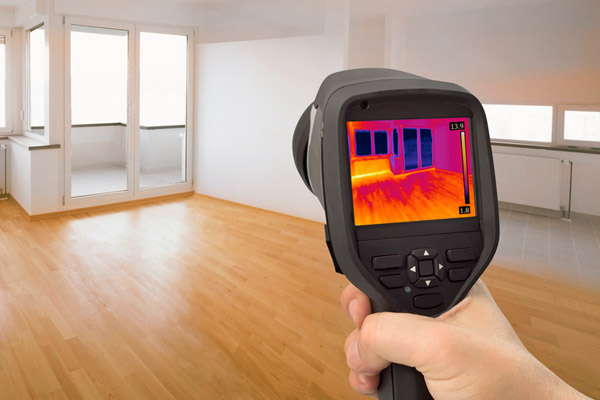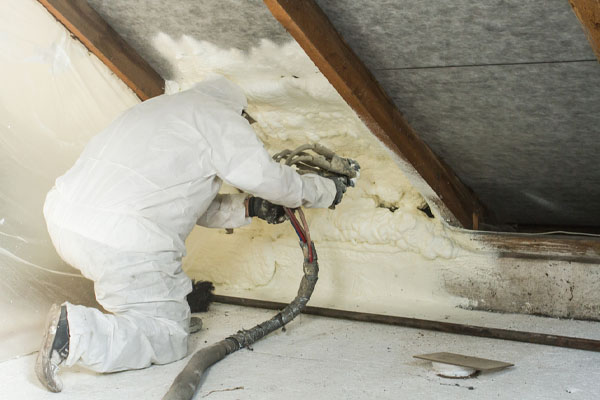How Does Insulation Affect Heat Loss?

Insulation plays a crucial role in reducing heat loss in buildings by slowing down the transfer of heat from the interior to the exterior or vice versa. The effectiveness of insulation depends on several factors, such as its thickness, density, and thermal conductivity. Good insulation prevents heat from escaping in the winter and keeps it out in the summer, reducing energy consumption and costs. Insulation also helps regulate the temperature and humidity levels within a building, improving occupant comfort and reducing the risk of mold growth and moisture damage. In this way, insulation is a key component in creating energy-efficient and sustainable buildings.
The Basics of Heat Transfer & Heat Loss
Contents
There is a significant loss of energy through heat transfer in your home, which can be attributed to various factors. For instance, a homeowner that resides in an older home with drafty windows, doors, walls, floors, attics, and loft spaces that are not insulated will likely require more energy to regulate the temperature inside. The issue arises from the building envelope being poorly constructed and leaky, which results in heat escaping outside and allowing colder air to enter from outside. To address this, you must create an airtight structure by minimizing heat loss through insulation and other measures. Before delving into these solutions, it is essential to understand the fundamentals of heat transfer, as heat is an energy form that can be transferred in a few basic ways.
Conduction
Conduction is the most common way that heat is lost. When there is a significant difference of temperature between the inside and outside of a home, air flows through the walls, windows, and other openings in the building envelope. This results in a decrease in the inside temperature when cold air enters and an increase in temperature when warm air enters, requiring more energy to heat or cool the space. Materials like metal or concrete have lower R values (heat flow resistance) and are more conductive, contributing significantly to heat loss. So, it is crucial to properly insulate surfaces that permit heat exchange to minimize heat loss, particularly walls, and windows.
Convection
Convection is another method of heat transfer. When cooler or warmer air from outside enters your home, it mixes with the existing warm air, leading to a transfer of heat energy to the colder air, resulting in a drop in temperature inside. This can significantly increase the energy required to heat or cool the interior, which could be prevented if the building envelope was correctly insulated, thus minimizing heat loss. Convection is the natural movement of air caused by temperature variations. As heat rises, you may have noticed that the upper level of your home is warmer than the lower level during the winter or summer.
Radiation
Radiation is another heat transfer method, where energy is conveyed through electromagnetic waves without involving particle movement, like in conduction and convection. When an object or material absorbs energy, it can reflect and emit heat, influencing the temperature. Typically, radiation results in heat gain and can pose a significant issue in poorly insulated loft spaces directly exposed to the sun. The heat an object or surface can generate determines the amount of heat it emits and reflects. The material’s structure and characteristics, such as darker and matte surfaces reflecting more energy than lighter and shinier ones, play a vital role in this process. Thinner materials emit and reflect heat more effectively than thicker ones. Examples of radiation are sunlight passing through windows, which can warm a house or the heat generated by a burning fire.
How Insulation Reduces Heat Loss

Insulation can greatly affect heat loss by reducing the heat that escapes from a building or enclosed space. Heat easily moves from warm areas to cooler areas, so in cold weather, heat will flow from the interior of a building to the exterior, causing heat loss. In warmer weather, heat can flow from the exterior to the interior, causing heat gain.
Insulating materials, such as spray foam, can help reduce heat loss in several ways:
- Thermal resistance: Insulation materials are rated by their thermal resistance, which measures their ability to resist heat flow. The higher the thermal resistance value, the better the insulation’s ability to resist heat flow, reducing heat loss.
- Air sealing: Insulation can also help prevent air leaks that allow cold air to infiltrate a building and warm air to escape. Air sealing is critical around windows, doors, and any other gaps or cracks in the building’s envelope.
- Reflective surfaces: Insulation with reflective surfaces can reflect radiant heat back into the interior of the building, reducing heat loss.
- Moisture control: Insulation can also help prevent moisture buildup, leading to mold growth and other problems that can reduce the insulation’s effectiveness.
By reducing heat loss, insulation can help lower energy bills, improve indoor comfort, and reduce the environmental impact of heating and cooling a building.
Conclusion
Thermal insulation prevents heat loss, increases energy savings, and improves indoor comfort. By reducing heat loss, insulation helps to maintain a consistent indoor temperature, reduce heating and cooling costs, and minimize the building’s environmental impact. Proper insulation can also prevent moisture buildup, air leaks, and other problems affecting the building’s energy efficiency. It is essential to consult a professional to make sure the insulation is installed correctly and meets the building’s specific needs. Consult a professional to assess your home’s insulation requirements and get expert recommendations for the most appropriate insulation type and thickness to achieve optimal performance.
How Does Insulation Affect Heat Loss In Colorado?
When it concerns air sealing or upgrading your home’s insulation, consulting with a professional is the best option. However, not all will offer the same quality of service and pricing. Always work with the best one in your area. Residents of Fort Collins, Colorado, and the neighboring area can call Ascend Construction for superior service.
Ascend Construction specializes in insulation removal and installation, air sealing, energy conservation, energy audits, whole-house fan installations, and much more! You can count on us to provide you with service that outshines the rest!

Contact Ascend Construction for a free consultation today. We can provide you with practical solutions to address the problem areas in your Fort Collins home. All of our services are affordable, and our work is guaranteed. Click here to contact us, or click the button below to give Ascend Construction a call. We offer free, no-obligation, in-home consultations.
Ascend Construction
4115 County Road 19
Fort Collins, CO, 80524
(970) 420-5495